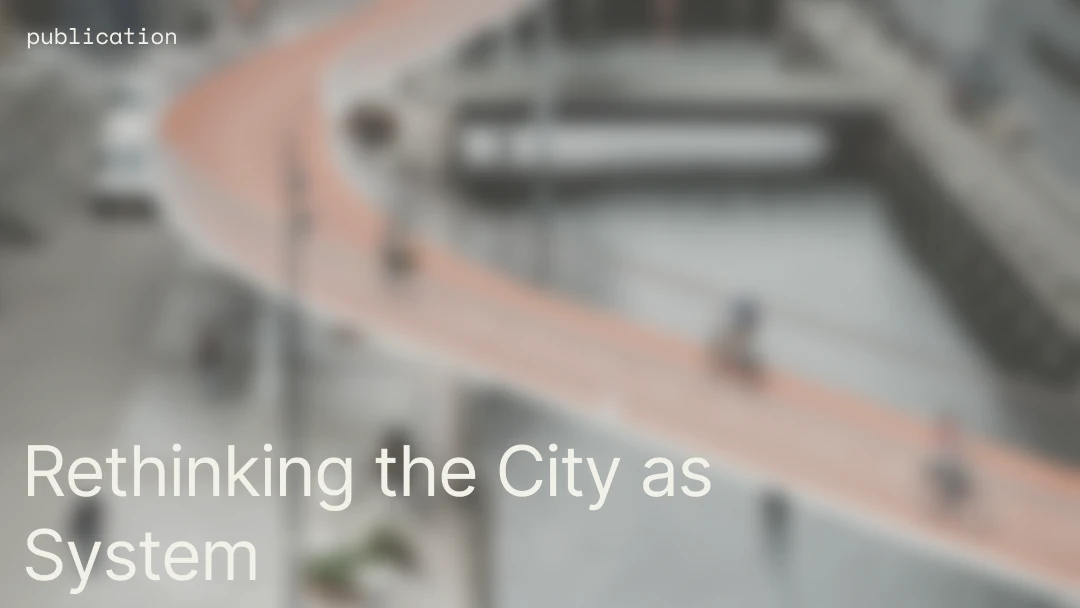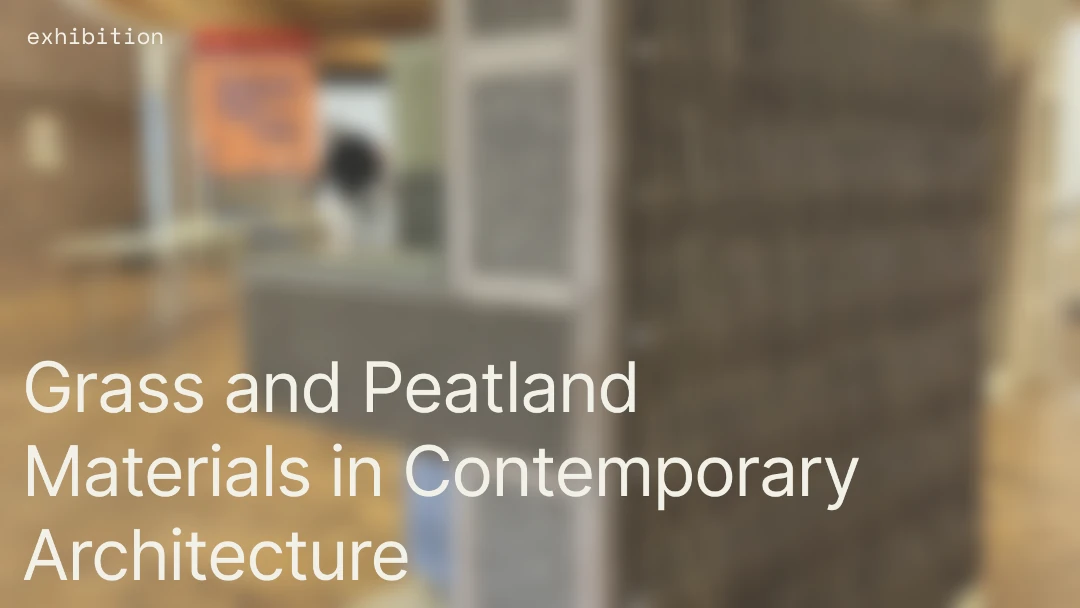
Bio
Ditte Lysgaard Vind is a renowned circular economy and design expert and practitioner, based in Denmark. Ditte is known for pioneering new materials as well as business models while sharing the knowledge gained from practice through teaching and thought leadership. She is the Chairwoman of the Danish Design Council and a member of several boards including the global SDG innovation lab UNLEASH. Ditte previously co-founded Lendager The Circular Way, a subsidiary of the Lendager Group. Today, she is the Chief Innovation & Science Officer at BLOX Hub.
What drives you?
In my current position I try to mix my experience within the practical and theoretical realm to help move — from niche to norm. There are so many great pilots out there, but we need to scale them so that it becomes the new way of doing things. So we have to build a framework and space that helps accelerate this.
For many years now I moved across the spectrum, from a systems point of view, down to product development details and back again. It's an ongoing process of needing both, the systems perspective is where the big change lies but we also need the practical innovations to happen — it has to be recognised as an ecosystem of solutions.
I think I can have a bigger impact or be more helpful in the transformation towards systems change by having experience from the messiness of practice and understanding what happens within a material innovation process.
I recently published a book, Danish Design Heritage and Global Sustainability, and also teach on the topic of Design, as a tool to question the status quo and help shape the future we don't yet know. I believe that once we start asking questions and challenge all of the things that we take for granted as natural but that are in fact social constructions, we will get the opportunity to create real change. The other part of what we can take from design is the ability to shape something that we don't yet know. Science is really great at telling us what we need to move away from but we haven't been that great at imagining what we might move towards. I think we need to practise that ability so that we really can start moving towards it and engage more people and reach those social tipping points.
What does sustainability mean to you?
For me it means, the ability to provide value for people while staying within the planetary boundaries. In other words, it's a new definition of success, recognising that we are in the anthropocene. Everything we do affects the planet which then in return affects our ability and the ability of future generations to thrive on the planet.
So we can't really value any action or any sort of traditional level of success without looking into the cost from a planetary perspective and how much value are we actually able to provide for people…
I have been very inspired by trying to understand value creation from a “use” value rather than an exchange value perspective. Today, both throughout society and the built environment, in particular due to the financialisation of the built environment , we have moved from value creation being about the value someone has when using a solution to the value defined by the cost.
So that ability to go back to the “use” value is a key component of when talking about sustainability because it comes down to that ability to create value for people within the planetary boundaries. This is super difficult to move towards. Because what does that actually look like? Obviously we are very far from it today, but I think going back to that role of design and the ability to question the things that we take for granted could give shape to something new.
We need to shift direction and ensure the needs and wellbeing of people are at the core and the capacities of production match that. We have completely reversed this, so a key part of moving towards sustainability is re-configuring our values and consumption. We have to ask, what does a good life actually look like? The same goes for the built environment. Is sustainability a matter of CO2 per square metre or the overall value creation? How many square metres do you need to feel value? Is bigger always better? It's all correlated.
Also, we do need to be super mindful of the fact that there is no silver bullet. So we need everything to come together and look at it as an ecosystem of solutions.
What are the main challenges today when you look at sustainability in the built environment?
I think a key element is very related to the fact that the built environment has become an asset class. If you look at housing it is, on the one side a human right and on the other an object for speculation. So that paradox creates a dilemma as there's an imbalance of priorities. The purpose of the built environment today is to be a good investment. And while I dont mind that there is a return, it needs to come secondary. The primary purpose should always be to provide a frame for human life.
And I believe that this is the biggest problem we see today, when we look at decision making processes. Success is ultimately measured on the return you are able to make and that will come at a consequence in terms of both social value creation and decarbonisation, one example being material quality because it brings in a short-term perspective.
Being able to see things from a systemic point of view as well as having worked within material innovation. What is your opinion on the progress of regulations and standards?
I think that there are a lot of great intentions and good things to celebrate within the current progress, as we are moving in the right direction. But there are still huge issues…
When you try to create change by using existing rules there is a great risk that you end up confirming existing rules… which is in favour for the existing industry. So I think some of the things that I see have the risk of making that mistake, if we are not smart about it, especially when it comes to standards and also fire safety regulations and similar.
Obviously no one disagrees with safety and the importance of protecting people and buildings from fire, but there is an opportunity to do it smarter than the existing. But the system is not flexible enough and definitely ensures that innovation is kept out to a large degree. So when we try to use tools that have been created to keep out innovation, to innovate, there is a risk that we end up doing the opposite.
The more we can lean into the legislation coming now and the changes coming with it, the softer the landing will be…
As you just mentioned the rigid progress within standards and innovations, how do we move towards a new palette of materials?
I think this is a key part of what we are working towards at BLOXhub. If you look at the built environment activities within Innovation and research, the resources going into it are mind-blowingly small compared to the problem we are facing.
So of course the first step is simply getting acquainted with innovation. There is a big need for the built environment to do things in a very different way. And we have to start using all these new materials, but at the same time there is also the need for simply learning to learn new things.
There is an opportunity to get much better at innovation at its core and we see the same with digitalisation. The built environment has been super slow at adapting digital processes and I think the drivers are the same. We have to train the industry to work with innovation to build future-proof businesses.
Practising innovation allows for a better assessment of risk versus perceived risk of doing things in a new way. Meaning we can start having a much better understanding of what it takes both from a capabilities perspective, but also from the cost of risk, which is quite often valued so high there is really no incentive to do things in a new way.
I also believe that soft funding has a big opportunity to facilitate and accelerate this process, being an enabling body in between research and implementation, and helping new materials get certified quicker.
Where should the industry stand by 2030?
In 2030, buildings and cities are an integrated part within the transition toward a regenerative society. That means that its integration is at the core, and we have stopped looking at individual buildings. We start looking at the use value of a building within an entire ecosystem, the needs in terms of housing, energy systems and community — moving from a very siloed industry perspective and the role that buildings play today. This also includes being mindful of how we use resources.
We will start looking at well-being and biogenic materials playing a key part in this. And I think there will be many opportunities within bioengineering and understanding how buildings can store carbon.
Do you have any advice for those who strive to make changes?
Follow your passion and gut feeling. I have this notion of “enlightened action”. So rather than thinking you need to create a grand plan and a strategy, just start testing things. Start acting as quickly as possible because there is a level of urgency. This will inform and enlighten you.
Another very important lesson is failure. Failure is a necessary part of success. I also don't like it when I fail, it's extremely uncomfortable. So helping yourself and others sit and live with that feeling, is very important.
If we look at how much trouble we are in, there is also a kind of beauty in seeing how much room there is for everybody in the solution space. So i would say, get started and recognise that it's a journey.




























